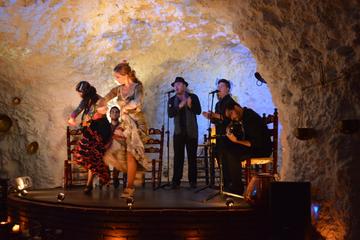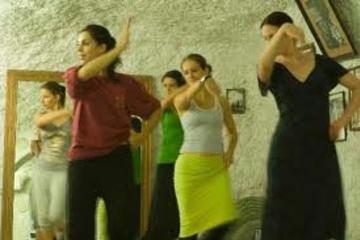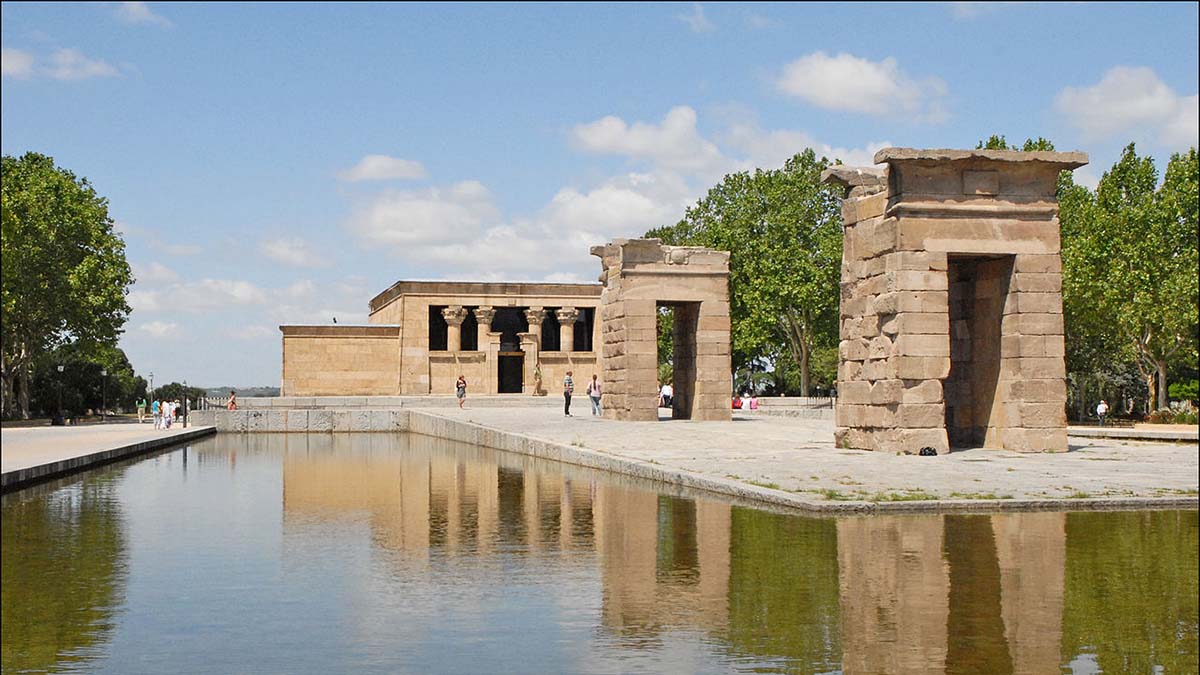
Madrid, Spain
by Keith Kellett
It’s a bit of a shock to see an ‘Egyptian-looking building’ on top of a hill, while on an open-top bus tour of Madrid. It is, I later discovered, Egyptian indeed. Even if you aren’t into ‘things Egyptian’, you can’t help but wonder how an Egyptian temple came to be situated almost in the centre of Spain.
The Debod Temple was built … or rather, re-assembled … near the Royal Palace, in the Parque de la Montana; the site of a former Army barracks, on top of a hill called Principe Pio Hill. Surrounding the building is a clear, moat-like lake and the whole thing stands inside a considerable garden, with palm trees making the temple seem at home, even against the backdrop of Madrid’s skyscrapers.
There was a video, projected on to one of the ancient walls, but the commentary was in Spanish only, of which my command doesn’t extend to Egyptological matters. And, there were wall carvings. These, also, I was disappointed in, but then, I’ve been to Egypt, where there’s much better to be seen. And, as I found out later, for 60 years, the temple had been under water for three-quarters of the year.
Upstairs, models show how the temple probably looked in its heyday, and how that stretch of the Nile looked before the coming of the dams. Better still, a series of computers gave a commentary … in English, if desired … describing the history of the temple, how the temples were rescued from the rising waters and, most importantly, how the Temple of Debod came to be in Spain.
Many Egyptian artefacts came to Europe in the 19th and early 20th Centuries … often, without the courtesy of asking the Egyptians. But, this wasn’t the case with the Temple of Debod. As late as 1960, it stood on its original site, and was freely given to Spain by the Egyptian authorities.
 Originally, the Temple of Debod stood on the right bank of the River Nile, just above the First Cataract near Aswan, dedicated to the god Amun and the goddess Isis. In 1898, the British, who then controlled Egypt, decided to dam the Nile at Aswan, the work being completed in 1902. With typical short-sightedness, they completely disregarded the fact that some important monuments would be lost beneath the surface of the resulting lake … including the beautiful Temple of Isis on Philae Island, and the not-so-well regarded Temple of Debod nearby.
Originally, the Temple of Debod stood on the right bank of the River Nile, just above the First Cataract near Aswan, dedicated to the god Amun and the goddess Isis. In 1898, the British, who then controlled Egypt, decided to dam the Nile at Aswan, the work being completed in 1902. With typical short-sightedness, they completely disregarded the fact that some important monuments would be lost beneath the surface of the resulting lake … including the beautiful Temple of Isis on Philae Island, and the not-so-well regarded Temple of Debod nearby.
However, once a year, during the annual flood, the sluice gates of the Aswan Dam would be opened, and it was possible, for a few short weeks, to visit the temples. Nevertheless, being submerged beneath the lake for most of the time wasn’t very good for the temples, especially Debod, which was already in a ruinous state when it was discovered.
In the late 1950s, a new dam was proposed. This would be the massive, Russian-built High Dam, and it was quickly realised that its building would cause many more monuments, including the colossal rock temple of Abu Simbel, 270 kilometres to the South of the dam, to be lost below the surface of the new Lake Nasser.
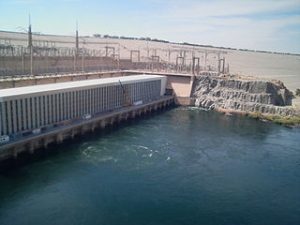 The Director-General of UNESCO appealed for any help that might be forthcoming, and over 50 nations responded. The selected monuments were dismantled, and re-assembled piece by piece above the rising waters.
The Director-General of UNESCO appealed for any help that might be forthcoming, and over 50 nations responded. The selected monuments were dismantled, and re-assembled piece by piece above the rising waters.
Some temples were less fortunate in having new sites found for them. But, the Egyptians decided they would be dismantled anyway, and presented to the countries which helped them most.
The visit filled a gap for me. When I visited Egypt, all the guide-book would say was ‘Several other temples were rescued, and given, as a token of appreciation, to the countries which had helped with the project’.
The commentary in the temple filled some of the missing spaces. It told about temples being re-assembled in the USA, the Netherlands, Italy and Germany. But, of course, the one we are interested in went to Spain.
A few years before, we’d taken a cruise on Lake Nasser, terminating at Abu Simbel, calling at several other rescued sites on the way. Many visitors disregarded Abu Simbel until the cruise boats were established, for it could only be reached by either an expensive flight or a long, tedious coach journey.
The problem was solved in exactly the same way as the old Egyptian navigators dealt with the cataracts.. More boats were built above the obstacle!
Cruises to Abu Simbel became possible. There won’t, however, be the congestion sometimes encountered on the Nile to the north of the dams, which sometimes resembles the Mississippi in its heyday! The number of boats on Lake Nasser will be strictly limited; understandably, the Egyptians don’t want too many tourists floating around on their drinking water!
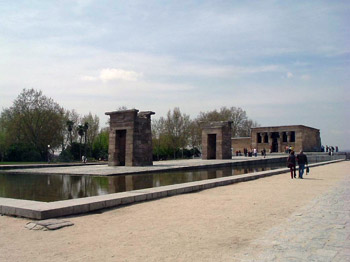 Immediately on boarding the boat above the Aswan Dam, the popular concept of modern Egypt was left behind. There’s only the boat, the lake and the temples … and tranquil, unhurried peace. On the way to Abu Simbel, the boat calls at the Kalabsha Temple site, Wadi el Seboua and the Amada Temples, all of which were rebuilt above the waters of the lake.
Immediately on boarding the boat above the Aswan Dam, the popular concept of modern Egypt was left behind. There’s only the boat, the lake and the temples … and tranquil, unhurried peace. On the way to Abu Simbel, the boat calls at the Kalabsha Temple site, Wadi el Seboua and the Amada Temples, all of which were rebuilt above the waters of the lake.
They’re still rarely mentioned in guidebooks, although, for example, the Avenue of Sphinxes at Wadi el Seboua is as fine as anything below the dams. It looks even more majestic, surrounded only by the desert sands, without the litter, fumes and bustle of a modern Egyptian town.
At the ancient citadel of Kasr Ibrim, the guides usually arrange a ‘sound and light’ show. This site is still in its original location, and it’s an important one. Not only Ancient Egyptian, but much later history, almost up to the present day, awaits discovery. So passengers aren’t allowed ashore, because archaeological work is still going on, but watch from the comfort of the sun deck.
The old priests and builders were accomplished showmen, and could extract the maximum awe and reverence from the worshipping masses. The temples were designed for approach from the front. That’s now impossible at Abu Simbel, except by boat, which is now easily the most satisfactory way to come.
For thousands of years, the temple was buried under the sands of the desert, until, one day in 1813, a sandstorm revealed a portion of it to Swiss explorer and archaeologist Jean-Louis Burckhardt. Four years later, an Italian named Belzoni managed to dig out enough of the façade to enter the temple.
The temples here wasn’t built, though; it was carved from solid rock! But, the engineers responsible for its rescue were up to the task. First, they injected 33 tons of resin into the rock to consolidate it, then the temple was sawn into 1036 blocks, weighing, on average, 30 tons each. A further 1112 blocks were taken from the surrounding rock. These were re-assembled almost seamlessly around concrete domes. Any cracks were soon filled by dust and sand, causing them to disappear. And, they managed to arrange things on the new site so that the sun lit up the interior of the temple twice a year at the Solstices, just as it had at the old site, ninety feet below.
When we arrived, most of the air and coach-borne visitors had gone. So, we had the place almost to ourselves for our visit, which included another ‘sound & light’ show. Then, the boat sailed once more, and dinner was served on deck, with the illuminated temple as a dramatic and unforgettable backdrop.
But, it didn’t do to make too late a night of it. There was a call 5.30 a.m. to see the sunrise on the temple! The sun played a major part in the rituals, so the temple is sited on the west bank of the lake, and at first light, it’s seen at its best.
Maybe the newly risen sun, setting the massive statues aflame, rivals even the ‘sound and light’ show of the previous night?
If You Go:
♦ Madrid Tourist Info: Debod Temple
♦ Madrid Official Tourism website
♦ Madrid Airport receives flights from all over the world; alternatives are to arrive by train (www.renfe.com) or by bus (www.eurolines.com)
♦ The Metro is the easiest way to get around Madrid, and the nearest station to the Debod Temple is Ventura Rodriguez. Or, the ‘Madrid Vision’ open-top bus tour stops right by the Temple.
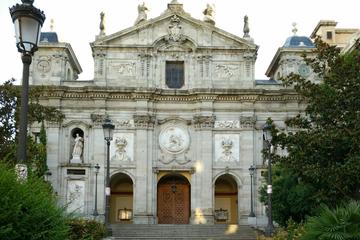
Hidden Corners of Madrid: Private Walking Tour
About the author:
Having written as a hobby for many years while serving in the Royal Air Force, Keith Kellett saw no reason to discontinue his hobby when he retired. With time on his hands, he produced more work, and found, to his surprise, it ‘grew and grew’ and was good enough to finance his other hobbies; travelling, photography and computers. He is trying hard to prevent it from becoming a full-time job! He has published in many UK and overseas print magazines, and on the Web. He is presently trying to get his head around blogging, podcasting and video. Email: keith-kellett@tinyworld.co.uk.
Photo credits:
The Debod Temple Madrid by Annie Dalbéra / CC BY
Original Debod Temple in Nubia, Egypt by Francis Frith / Public domain
Aswan high dam by عاصم سيد / CC BY-SA
Debod Temple recently by Keith Kellett

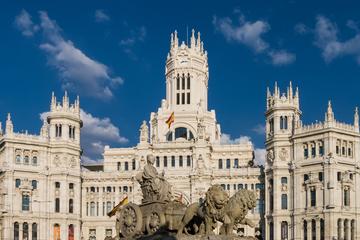
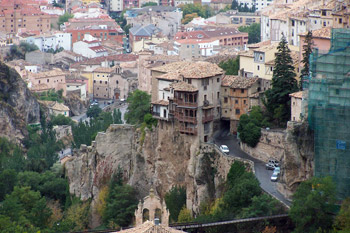
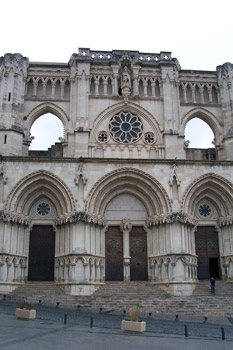 The hanging houses are the draw to this remote city but the old part of town itself is worth exploring. We take a short walk downhill from a lookout point to the Plaza Mayor where the Cuenca Cathedral is located. Dating from 1177, the building is impressive with its three arches. The Gothic Anglo-Norman façade is the only one of its kind in Spain with construction on the cathedral continuing for 300 years and never quite completed. I enjoy wandering the medieval cobblestone streets that wind past old stone houses, adorned with colorful plants spilling over the balconies and climbing up stairways.
The hanging houses are the draw to this remote city but the old part of town itself is worth exploring. We take a short walk downhill from a lookout point to the Plaza Mayor where the Cuenca Cathedral is located. Dating from 1177, the building is impressive with its three arches. The Gothic Anglo-Norman façade is the only one of its kind in Spain with construction on the cathedral continuing for 300 years and never quite completed. I enjoy wandering the medieval cobblestone streets that wind past old stone houses, adorned with colorful plants spilling over the balconies and climbing up stairways.
 We spend the night at Hotel Cueva del Fraile or The Cave of Friars, an enchanting place seven kilometers up the road. This 16th century building hidden in the rugged mountains was once a monastery (for the devout), later a workhouse (for the poor) and now a luxury place of refuge (for the weary traveler). I get lost finding my room as I wander the myriad of stairs and hallways, which only adds to the charm. The structure has stayed true to its original construction and surrounds a peaceful courtyard. The rooms, with high ceilings, thick stone walls and wooden beams, have no doubt been made more comfortable since the days of the friars. Antiques depicting former times are found throughout the building. The hotel restaurant features delicious, authentic Castilian cuisine for dinner and breakfast. It’s impossible for me to resist the thick, creamy hot chocolate and chocolate filled croissants on offer. Staying at Cueva del Fraile is a memorable experience for someone with an overactive imagination. Rumour has it that there is even a hotel spook!
We spend the night at Hotel Cueva del Fraile or The Cave of Friars, an enchanting place seven kilometers up the road. This 16th century building hidden in the rugged mountains was once a monastery (for the devout), later a workhouse (for the poor) and now a luxury place of refuge (for the weary traveler). I get lost finding my room as I wander the myriad of stairs and hallways, which only adds to the charm. The structure has stayed true to its original construction and surrounds a peaceful courtyard. The rooms, with high ceilings, thick stone walls and wooden beams, have no doubt been made more comfortable since the days of the friars. Antiques depicting former times are found throughout the building. The hotel restaurant features delicious, authentic Castilian cuisine for dinner and breakfast. It’s impossible for me to resist the thick, creamy hot chocolate and chocolate filled croissants on offer. Staying at Cueva del Fraile is a memorable experience for someone with an overactive imagination. Rumour has it that there is even a hotel spook!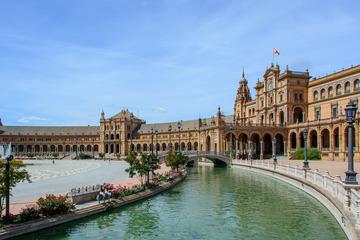
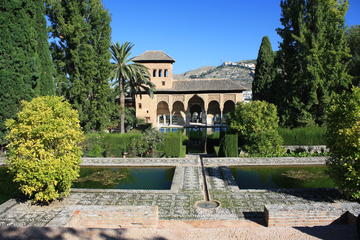
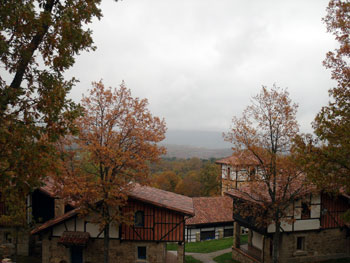
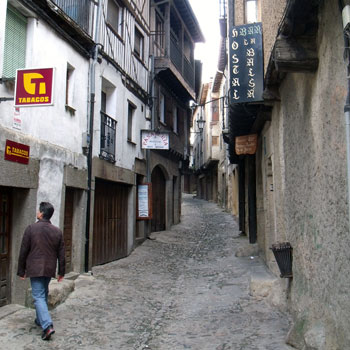 It had been five long years since I had participated in the program at the hotel-resort Abadía de los Templarios Hotel, a 15- to 20-minute walk from the town center of La Alberca, which is located in the western Spanish province of Salamanca amid the Sierra de Francia mountain range.
It had been five long years since I had participated in the program at the hotel-resort Abadía de los Templarios Hotel, a 15- to 20-minute walk from the town center of La Alberca, which is located in the western Spanish province of Salamanca amid the Sierra de Francia mountain range.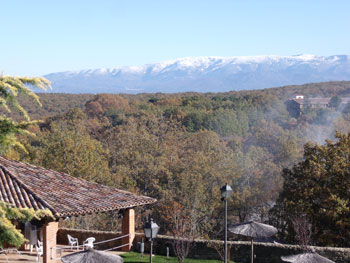 The program officially started on Friday morning in Madrid, where some 36 participants (including myself) headed to La Alberca via a three hour-plus bus ride (or personal automobile for some Spaniards) through rolling pastures and farmlands after leaving the urban sprawl of Spain’s capital city. On the bus, Anglos and Spaniards were paired up, so the latter could begin their intensive language exposure.
The program officially started on Friday morning in Madrid, where some 36 participants (including myself) headed to La Alberca via a three hour-plus bus ride (or personal automobile for some Spaniards) through rolling pastures and farmlands after leaving the urban sprawl of Spain’s capital city. On the bus, Anglos and Spaniards were paired up, so the latter could begin their intensive language exposure.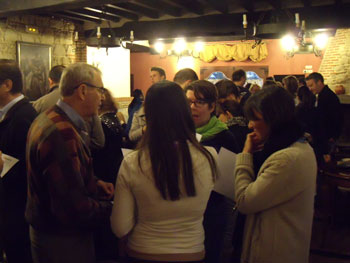 Who are these Spaniards who are there at the behest of their company or their own volition? Typically, a group is made up of professionals from various fields such as IT, production, and other fields. They are generally in their 20s or 30s, but some are older. One such Spaniard, Angel, an IT professional, was actually on his fifth program. Before taking part in Pueblo Ingles, he commented, “I didn’t understand anything,” but the intensive exposure time had increased his confidence and understanding of the language’s nuances. Another Spaniard, Rocio, who works for an energy renewal company, had studied English since high school, but remarked on her primary reason for coming, “My biggest problem is my listening. My listening is very bad.”
Who are these Spaniards who are there at the behest of their company or their own volition? Typically, a group is made up of professionals from various fields such as IT, production, and other fields. They are generally in their 20s or 30s, but some are older. One such Spaniard, Angel, an IT professional, was actually on his fifth program. Before taking part in Pueblo Ingles, he commented, “I didn’t understand anything,” but the intensive exposure time had increased his confidence and understanding of the language’s nuances. Another Spaniard, Rocio, who works for an energy renewal company, had studied English since high school, but remarked on her primary reason for coming, “My biggest problem is my listening. My listening is very bad.”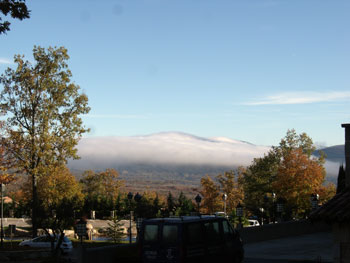 Rick, a 74-year old former teacher and coach who’s taught English in China, heard about the program via word of mouth when he was in Germany (the method which has brought many Anglos to the venues). He emanated a common sentiment among the Anglos, “I want to learn more about the Spanish culture, the food. I want to help them speak English.”
Rick, a 74-year old former teacher and coach who’s taught English in China, heard about the program via word of mouth when he was in Germany (the method which has brought many Anglos to the venues). He emanated a common sentiment among the Anglos, “I want to learn more about the Spanish culture, the food. I want to help them speak English.”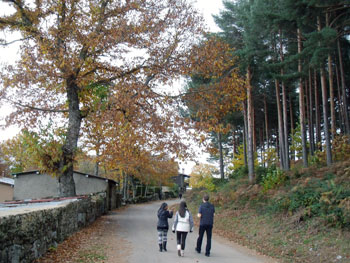 During one of our two-hour siestas and one of the one-to-one sessions, we took walks to the center of town, full of half-timbered houses and shops where one could obtain many things, from a can of Coca-Cola to a scarf, hat, and gloves, the latter three which my new Spanish friend found himself in need of. Our brisk walking on winding roads amid the captivating autumn foliage kept us warmer as chilled afternoons gave way to darkness. He gave me more insights on the activity since his ability to run 26 miles-plus puts my ability to run only around six miles daily to shame. As we walked back on the road leading back to the hotel through woodlands, pasture, and small farms, we could hear the soundtrack of baaing sheep and oinking pigs.
During one of our two-hour siestas and one of the one-to-one sessions, we took walks to the center of town, full of half-timbered houses and shops where one could obtain many things, from a can of Coca-Cola to a scarf, hat, and gloves, the latter three which my new Spanish friend found himself in need of. Our brisk walking on winding roads amid the captivating autumn foliage kept us warmer as chilled afternoons gave way to darkness. He gave me more insights on the activity since his ability to run 26 miles-plus puts my ability to run only around six miles daily to shame. As we walked back on the road leading back to the hotel through woodlands, pasture, and small farms, we could hear the soundtrack of baaing sheep and oinking pigs.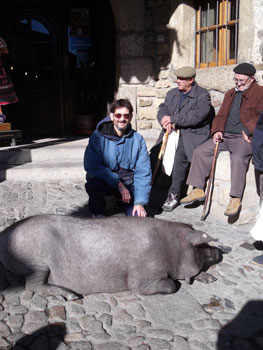 Ignacio and I were lucky enough to catch a common spectacle of a pig that’s allowed to run freely around town to garner handouts from the 1,000-plus locals (plus tourists) as it fattens up so it can be raffled off. We saw some girls being chased by the pig after they stopped giving it handouts. Salamanca is an area where ham products, especially from the limbs of the pig, are considered delicacies.
Ignacio and I were lucky enough to catch a common spectacle of a pig that’s allowed to run freely around town to garner handouts from the 1,000-plus locals (plus tourists) as it fattens up so it can be raffled off. We saw some girls being chased by the pig after they stopped giving it handouts. Salamanca is an area where ham products, especially from the limbs of the pig, are considered delicacies.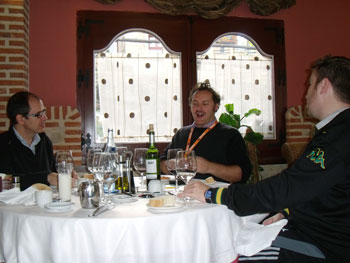 Some of the most connective moments between the participants take place during the meal times, where the table wine (lunch/dinner), tasty cuisine and conversation generously flow. Breakfasts can be a bit more laid back, given the Spanish penchant for kicking up one’s heels well into the wee hours of the morning with willing Anglos. After all, to a Spaniard, 8 p.m. is still considered “afternoon.”
Some of the most connective moments between the participants take place during the meal times, where the table wine (lunch/dinner), tasty cuisine and conversation generously flow. Breakfasts can be a bit more laid back, given the Spanish penchant for kicking up one’s heels well into the wee hours of the morning with willing Anglos. After all, to a Spaniard, 8 p.m. is still considered “afternoon.”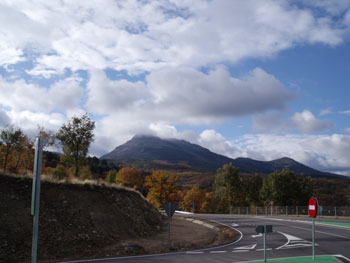 As a seasoned veteran of this program, I couldn’t get over just how perfectly put together this group was, which is credited to the Anglos Dept. in Madrid, who do their best to match the participants up based on the application they must fill out online to be considered for a holiday that sees their room and board covered over the course of the program for their volunteer service.
As a seasoned veteran of this program, I couldn’t get over just how perfectly put together this group was, which is credited to the Anglos Dept. in Madrid, who do their best to match the participants up based on the application they must fill out online to be considered for a holiday that sees their room and board covered over the course of the program for their volunteer service.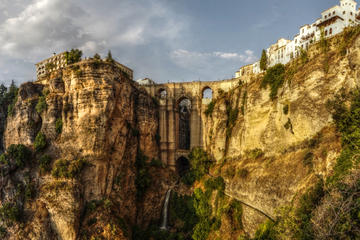
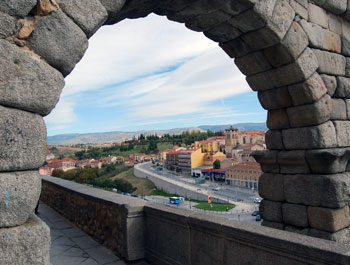
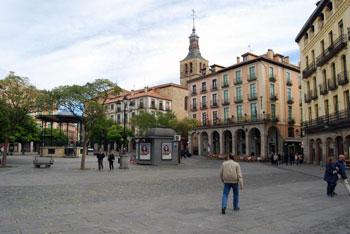 But, how to get water supplies up there? The water from the Rio Clamores was insufficient for their needs, anyway. So, in the middle of the 1st Century AD, during the reign of the Emperor Domitian, an ambitious project was begun. A canal was dug, to bring water from the Rio Frio, 18 kilometres (12 miles) away. The valley of the Rio Clamores would be spanned by a massive aqueduct 800 metres (about 2500 feet) long and, at its highest point, reaching nearly 30 metres (100 feet) high.
But, how to get water supplies up there? The water from the Rio Clamores was insufficient for their needs, anyway. So, in the middle of the 1st Century AD, during the reign of the Emperor Domitian, an ambitious project was begun. A canal was dug, to bring water from the Rio Frio, 18 kilometres (12 miles) away. The valley of the Rio Clamores would be spanned by a massive aqueduct 800 metres (about 2500 feet) long and, at its highest point, reaching nearly 30 metres (100 feet) high.
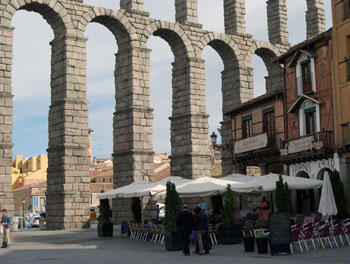 The aqueduct was built from 25,000 stone blocks and, notwithstanding its size, no mortar at all was used in its construction. It took over fifty years to built, was completed in the early 2nd Century, by which time the Emperor Trajan had ‘taken the purple’. However, a much later folk-tale told that it had been built overnight, by the Devil himself … hence its alternative name of Puente de Diablo, or ‘Devil’s Bridge’. It’s said that the Evil One was after the soul of a local woman, to achieve which, he had to complete the bridge in a single night … in which task, he failed, because he was unable to find the last block before the sun rose.
The aqueduct was built from 25,000 stone blocks and, notwithstanding its size, no mortar at all was used in its construction. It took over fifty years to built, was completed in the early 2nd Century, by which time the Emperor Trajan had ‘taken the purple’. However, a much later folk-tale told that it had been built overnight, by the Devil himself … hence its alternative name of Puente de Diablo, or ‘Devil’s Bridge’. It’s said that the Evil One was after the soul of a local woman, to achieve which, he had to complete the bridge in a single night … in which task, he failed, because he was unable to find the last block before the sun rose.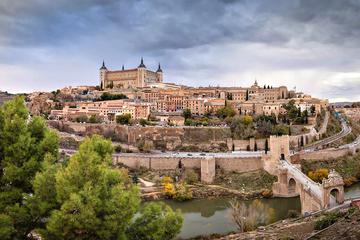
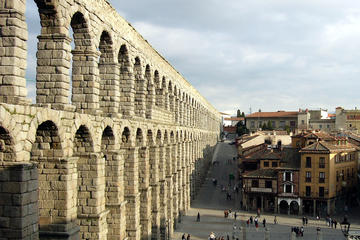
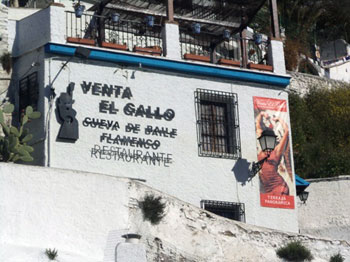
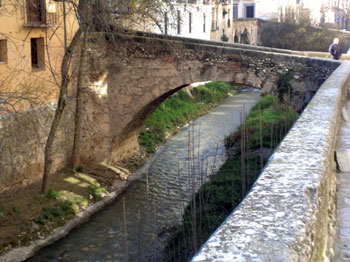 “Tourist traps,” `he sniffed,” and anyway the performances are only at night”. Little did he know what I found.
“Tourist traps,” `he sniffed,” and anyway the performances are only at night”. Little did he know what I found.
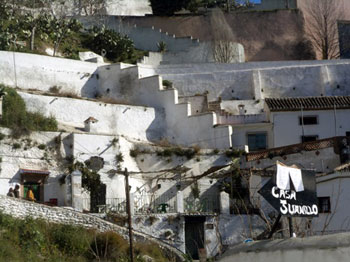 Many of these caves, warm in winter, cool in the summer, are still inhabited today, well appointed and furnished. Climbing white washed stairs from one level to the next, I came past many tablaos, the venues where nightly performances of Flamenco take place and which earned Sacromonte the byword of tourist trap. Up to a point this is justified, but if you know what to do and where to look you get to experience the real thing.
Many of these caves, warm in winter, cool in the summer, are still inhabited today, well appointed and furnished. Climbing white washed stairs from one level to the next, I came past many tablaos, the venues where nightly performances of Flamenco take place and which earned Sacromonte the byword of tourist trap. Up to a point this is justified, but if you know what to do and where to look you get to experience the real thing.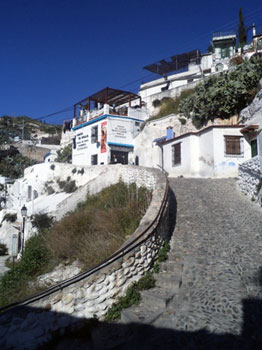 They waved me inside and I was the recipient of a performance just for me and definitely a spell bound spectator to the real thing.
They waved me inside and I was the recipient of a performance just for me and definitely a spell bound spectator to the real thing.